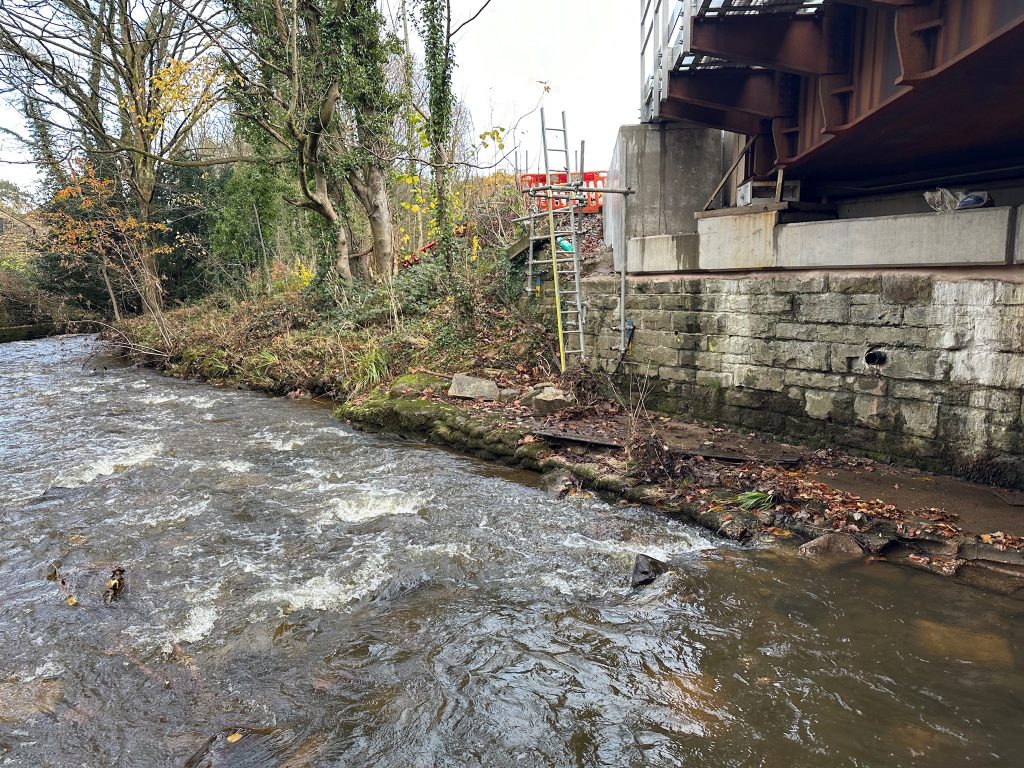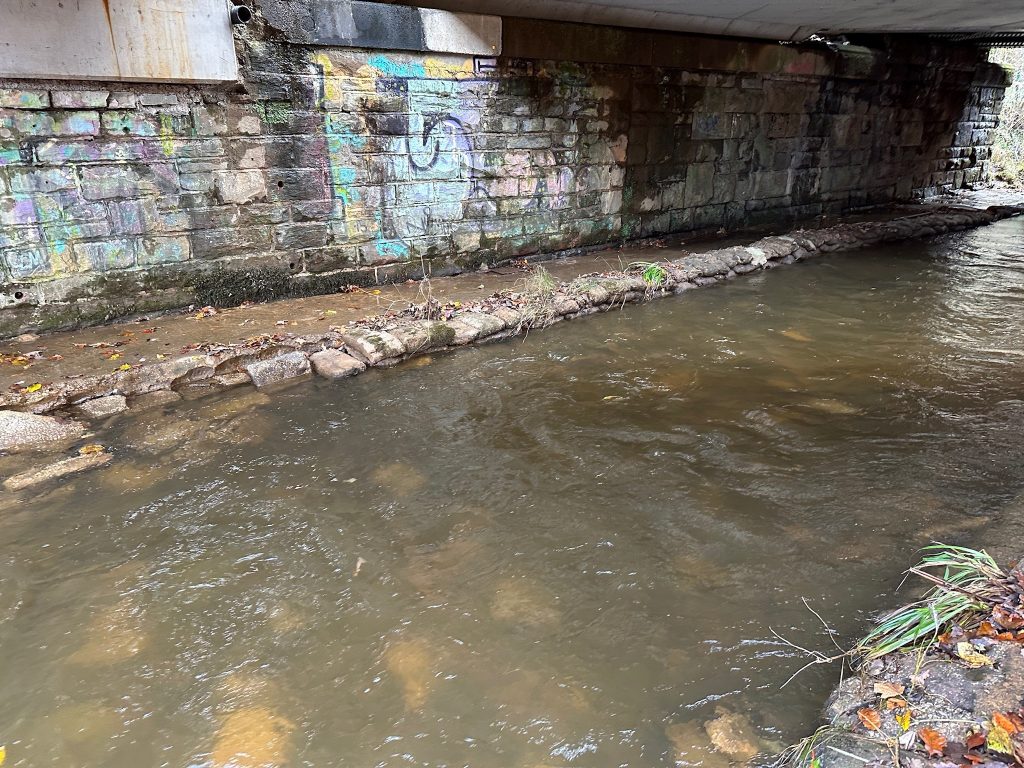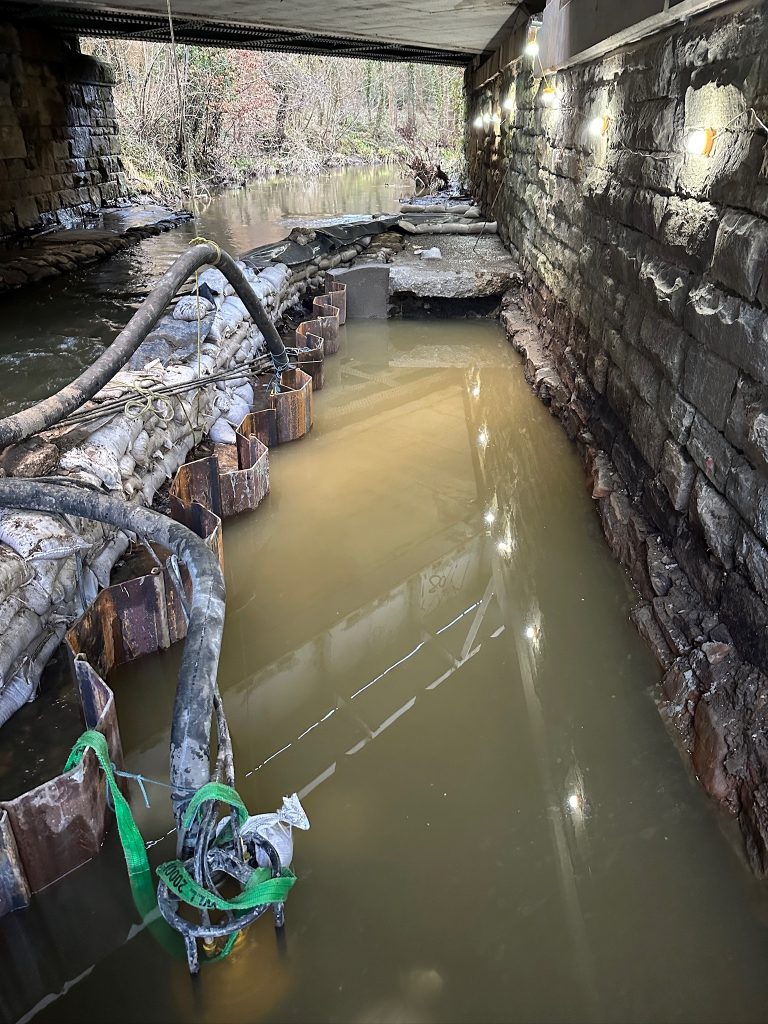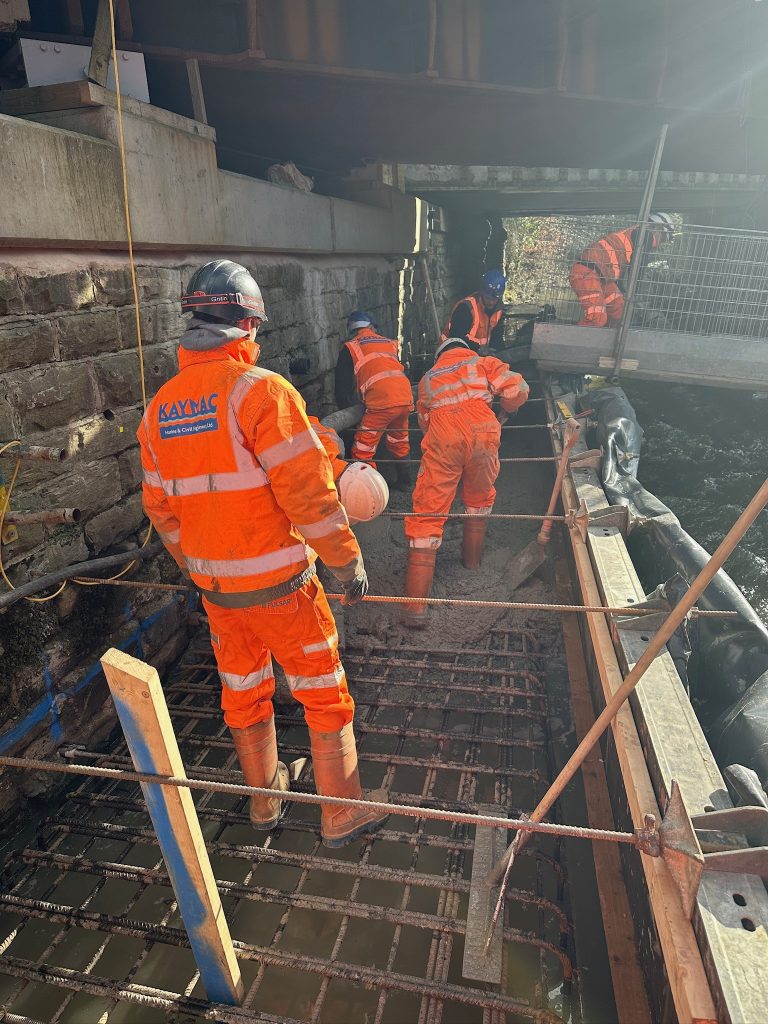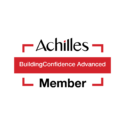Hope Valley Scour Protection Scheme
Client: VolkerRail Story JV
Location: Sheffield
Background:
The Hope Valley Capacity Scheme forms part of the government’s commitment to upgrade the North of England’s rail network, to meet future passenger demand. Kaymac were recently contracted by VolkerRail/Story Joint Venture (VRSJV) to complete an abutment strengthening and scour protection scheme as part of an £80m investment, to improve capacity and connectivity of the rail line. The £80m project is part of a £137m investment and saw VRSJV undertake extensive enhancement works, removing several bottlenecks along the route, improving reliability, increasing passenger services and aiding in freight movements between Sheffield and Manchester.
Kaymac’s involvement in the project was along a section of the River Sheaf. The source of this river lies within the Peak District National Park, specifically from the convergence of several small streams in the Burbage Valley. The site was located where the rail line crossed this river, slightly south of Abbeydale Hamlet in South Yorkshire, England.
The remoteness of the site made it logistically challenging to deliver the large items of plant, materials and equipment that were necessary to carry out the abutment strengthening works. The required plant and materials could only be delivered to site once a week during rail possessions, using a Road Rail Vehicle. This operation had to be meticulously coordinated with VRSJV.
The Challenge
The structure required strengthening to both the east and west abutments to support the new rail line. This was achieved by installing wall anchors and sheet piles, plus the removal of the existing and casting of new reinforced concrete abutments within the watercourse.
The installation of reinforced concrete works within the watercourse required a robust form of temporary works. As such, Kaymac developed a working method proposal that permitted the works to be undertaken in dry conditions, whilst also facilitating the requirement to control and monitor any environmental implications arising from the works.
The Solution
Kaymac mobilised to site once the permits were issued. During line possessions, operatives established a lay down area, constructed a temporary access bridge, and installed a ramp to allow plant and machinery to safely access the works area. The team also deployed permeable and non-permeable downstream silt curtains as environmental mitigation. Once these measures were in place, operatives utilized approximately 700 sandbags to create a bund which acted as a temporary watercourse diversion. Care was taken to ensure the temporary works were installed in accordance with the EA permit. Once a fish rescue had taken place, a de-watered safe working area was then established.
Due to their poor condition, both the East and West existing concrete abutments were broken out and excavated down to formation level in two distinct phases. Sheet piles were also installed using an excavator mounted attachment to act as an additional scour protection measure. Core drilling was then conducted prior to wall anchors being installed within the existing bridge masonry. These anchors varied in lengths of 1.4m to 2.2m. Formwork was then erected, and steel rebar reinforcement constructed, prior to the new concrete abutments being poured. Periodic pH testing was carried out to the watercourse during the project, in compliance with the EA permit.
The Outcome
This project was conducted during the winter months. Consequently, extreme weather conditions were experienced on site, including temperatures reaching -10°C, heavy snowfall, unworkable water conditions and flash flooding. Under the Client’s instruction, Kaymac were able to assign additional resources to permit day and night shift working which despite the weather delays, allowed the structure to be commissioned to the client’s required deadline.



